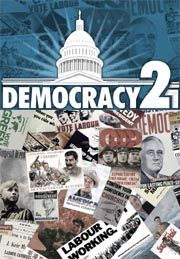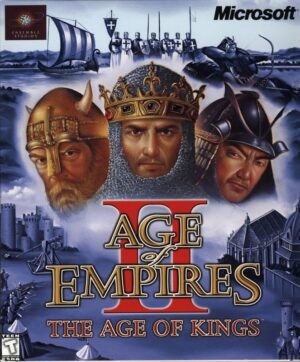Retro Replay Review
Gameplay
Democracy 2 places you in the hot seat as the elected leader of a virtual nation, blending turn-based strategy with political simulation. Each turn represents a quarter of a year, during which you set the intensity of dozens of policies via simple sliders—ranging from tax rates to healthcare spending. These sliders have immediate and ripple-effect consequences on interest groups, public opinion, and the national budget, creating a web of interconnected challenges.
(HEY YOU!! We hope you enjoy! We try not to run ads. So basically, this is a very expensive hobby running this site. Please consider joining us for updates, forums, and more. Network w/ us to make some cash or friends while retro gaming, and you can win some free retro games for posting. Okay, carry on 👍)
A key layer of depth comes from appointing ministers to head various departments. Each minister brings unique strengths, weaknesses, and ideological leanings that influence how effectively their department delivers on your chosen policies. Over time, ministers gain experience, unlocking subtle bonuses or penalties that force you to weigh loyalty and competence against political expediency.
Another standout feature is the “focus group” interface, which visualizes individual voters as colored icons. This tool helps you pinpoint specific demographic groups—such as environmentalists or business owners—and see how likely they are to vote in the next election. Balancing the needs of these groups, while managing inflation, unemployment, and national debt, leads to tense, meaningful decisions every quarter.
For newcomers, the volume of policies and statistical feedback can be intimidating, but the game’s intuitive UI and in-game tutorials alleviate the learning curve. Veterans of political sims will appreciate the sheer systemic complexity and the emergent narratives that arise from juggling competing interests. All in all, Democracy 2 offers a robust sandbox for anyone fascinated by the art of governance.
Graphics
Visually, Democracy 2 employs a clean 2D, icon-driven interface that prioritizes clarity over spectacle. The main screen is populated with color-coded charts, graphs, and policy sliders that all remain readable at a glance. While there are no flashy animations or 3D landscapes, every graphic element serves a functional purpose, ensuring you spend more time strategizing and less time navigating menus.
The focus group panel, with its mosaic of tiny voter icons, is an especially clever touch. Although simplistic, this representation immediately communicates shifts in voter sentiment and turnout likelihood without wading through reams of text. Pop-up tooltips and context-sensitive charts reinforce the game’s commitment to usability.
Backgrounds and decorative elements stay unobtrusive, allowing data to take center stage. The color palette—dominated by blues, reds, and neutral grays—feels appropriate for a political theme. Even though the visuals won’t win any awards for artistry, they do a superb job of presenting complex information in an accessible manner.
Customizability options, such as toggling specific overlays or adjusting chart display settings, further enhance readability. For a strategy game built on numbers and policies, Democracy 2’s graphics strike a solid balance between function and form.
Story
As a political sim, Democracy 2 doesn’t offer a scripted narrative or character arcs in the traditional sense. Instead, its “story” emerges from the crises you face and the choices you make. Whether you stave off a debt crisis, enact sweeping welfare reforms, or narrowly avoid losing an election, each playthrough weaves a unique political saga.
You begin by selecting your country’s economic model and term limits, setting the stage for how aggressive or conservative your governance can be. From there, you’ll confront real-world issues—climate change, unemployment, crime, and public debt—forcing you to craft a narrative around your leadership style. Do you push through high taxes for social programs, or slash spending to stimulate business growth? Your decisions write the plot.
Events like recessions, terrorist threats, and scandals inject tension and urgency, creating peaks and valleys in your tenure. The unpredictability of voter reactions and random global events ensures no two campaigns feel identical. In essence, Democracy 2 turns the political process itself into a dynamic story engine that keeps you invested from your first cabinet meeting to your final election results.
Overall Experience
Democracy 2 delivers a deeply engaging political simulation that challenges players to think like real-world leaders. Its blend of policy sliders, minister management, and voter feedback makes every decision feel significant. While the interface may appear austere to those expecting flashy visuals, its streamlined presentation allows the game’s strategic depth to shine.
The game’s steep learning curve can be off-putting at first, but persistence is rewarded with moments of genuine triumph—such as winning a razor-thin election or engineering a successful deficit reduction plan. Replayability is high, thanks to customizable term limits, difficulty settings, and random events that keep each session fresh.
Democracy 2 stands out in the crowded field of strategy titles by focusing squarely on the mechanics and drama of governance. Whether you’re a newcomer intrigued by politics or a veteran strategist seeking a mental workout, this game offers countless hours of thoughtful, player-driven storytelling. For anyone curious about the delicate balance between power, policy, and public opinion, Democracy 2 is a must-try experience.
 Retro Replay Retro Replay gaming reviews, news, emulation, geek stuff and more!
Retro Replay Retro Replay gaming reviews, news, emulation, geek stuff and more!




Reviews
There are no reviews yet.